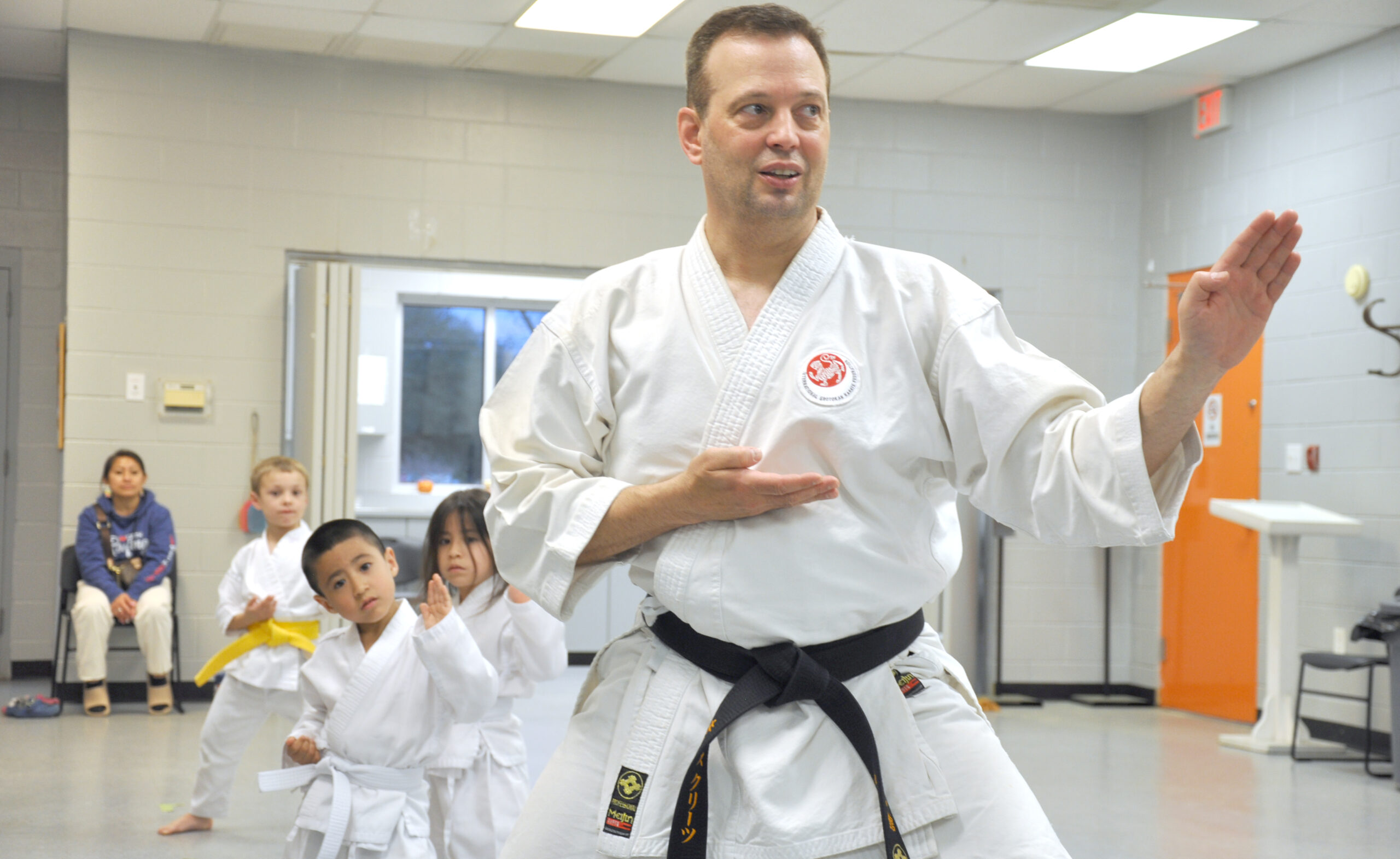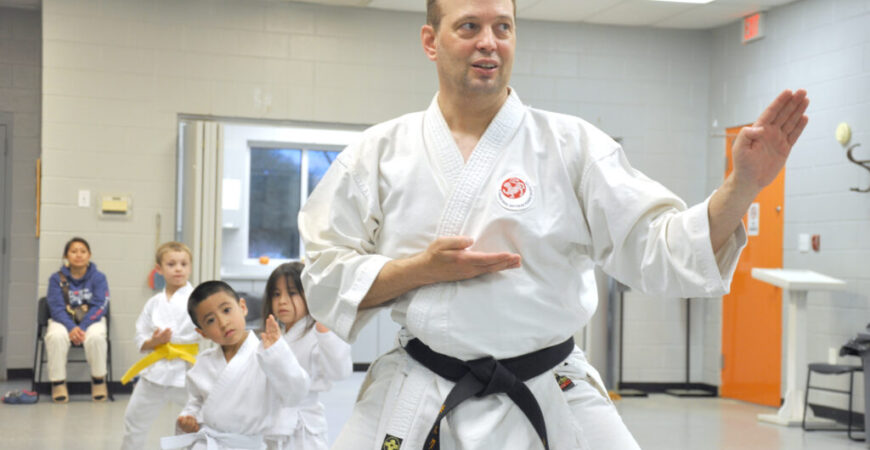Throughout the week, Dr. Keith Kreitz can be found providing life-saving medical care and advice to his patients at ECU Health Duplin Hospital in Kenansville where he is a surgeon as well as the director of bariatrics. On Wednesday nights, however, the doctor hangs up his white coat and stethoscope to don a different kind of uniform – the white gi and black belt characteristic of a Shotokan karateka.
Kreitz, a second degree black belt in the Japanese martial art of Shotokan, is offering free karate classes to anyone interested in learning at his Campbell Center dojo in Wallace to encourage people to get out and exercise.
“It’s passing on the art, I love it,” said the doctor. “It’s something that’s become part of me.”
Kreitz began taking karate classes at 10 or 11-years-old while his father was stationed at Picatinny Arsenal in New Jersey, he says, though the far drive to the dojo resulted in the classes lasting only a summer. It wasn’t until he’d earned his medical degree and was working on his fellowship in bariatric surgery at Lake Charles Memorial Hospital in Louisiana that the doctor first became acquainted with the art of Shotokan through Dr. Pat Walken, an anesthesiologist at the hospital.
Walken explained to Kreitz that Shotokan was a karate style out of Okinawa that was transported to mainland Japan in 1922 by Ginchin Funakoshi, a pacifist and poet who wrote under the pen-name Shoto. When Kreitz asked Walken where he could learn, the anesthesiologist told him of a gardener who taught Shotokan at the LA Fitness Center in Lake Charles.
“A gardener who teaches karate? That’s like Mr. Miyagi! That’s the guy I need to see,” Kreitz recalled thinking.
Though Rod Prejean wasn’t exactly like the Karate Kid’s wise sensei, he was a proficient instructor who had been trained by two pupils of Shotokan founder Funakoshi: Takayuki Mikami and Teruyuki Okazaki. After his first few classes with Sensei Prejean, Kreitz developed a love for the art.

“It was a natural fit. Linear style, straight-forward, no pretentiousness,” said Kreitz. “I took a lot of knocks, but I learned a lot and it stuck with me.”
Upon completing his bariatric fellowship at Lake Charles, the doctor returned to Pennsylvania, where he worked as a bariatric and general surgeon at St. Mary Medical Center in Langhorne. Eager to continue his training, Kreitz asked his sensei for help locating a Shotokan dojo in the Keystone State. Prejean referred him to the International Shotokan Karate Federation (ISKF), one of the largest and most wide-spread Shotokan karate organizations in the world, founded in 1977 by Okazaki.
“I kind of had to start all over again,” said Kreitz of his time with the ISKF, adding that he was bumped from a first-degree brown belt to a sixth-degree green due to differences in the two school’s ranking systems. Ultimately, he feels the experience made him a better student.
After 17 years of doing karate with the organization, Kreitz achieved the rank of second-degree (or second dan) black belt, a testament to his dedication. “The old joke is: what’s the definition of a black belt? A white belt that just kept showing up,” he remarked. Now, the doctor seeks to share his love of Shotokan with prospective pupils of any age – completely free of charge.
“It originally was that way,” explained Kreitz. “Karate wasn’t something you paid to do. In old Okinawa, you would teach karate in secret, usually at night. It wasn’t something you advertised, but it wasn’t something you charged for, either.”
Kreitz hopes the classes provide the community with a way to keep active while learning valuable methods of self-defense. “I try to encourage people to get out, get that exercise in, if it’s just walking every day or riding your bike,” said Kreitz. “This is one thing where I can get people active, give them something they can do for life.”
For those uncertain or apprehensive about getting started, the sensei surgeon has sage insight.
“First thing they say with anything: take that first step and just show up,” advised Kreitz. “I do medicine by day, I do weight loss surgery, I do seminars and stuff, and what I tell everybody is: first thing, you show up and you learn about it. There’s a funny thing , though,” he added. “That’s most of life.“
As Kreitz continues to honor the teachings of Funakoshi and the art of Shotokan while promoting healthy habits in his community, the doctor endeavors to make as much of an impact on his student’s lives as his patients.
“They say if you do something at least for 3 weeks, you start to make a habit,” said Kreitz. “And if you can make a habit out of something, and it’s something good, it can become something for life.”
Kreitz’s classes at the Campbell Center are held Wednesdays from 6:30 p.m. to 7:30 p.m. Community members of all ages are encouraged to attend.
 Twitter
Twitter Facebook
Facebook Instagram
Instagram






